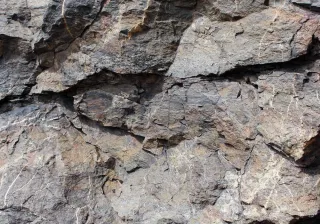When talking about the mining industry, the first image that comes to mind may be one of an old-fashioned sector where work is done with pickaxes and shovels with faces dirty from the coal.
Of course, mining has a long history. For instance, cobalt, which is also produced in Finland, has been used for millennia to colour glass and ceramics. As late as at the beginning of the last century, various dyes were the main applications of cobalt compounds. Today, this metal is a critical part of many modern technologies, such as smartphones and medical applications, and in the future it will become increasingly important with the proliferation of electric cars. Consequently, future technologies and sustainable development are dependent on the mining industry.
Just as modern technology needs mines, mines will need more and more new technology going forward.
Many ore deposits are increasingly scarce, scattered and generally located far from cities. Additionally, mines are challenging as operating environments as they are hard on the equipment and conventional positioning and data transfer solutions often do not work. Safety and environmental issues are also increasingly important with still much room for improvement at the global level. These challenges can be solved by more accurate ore mapping as well as automation and enhancing of mining processes, which in turn requires the utilisation of the latest technologies and new ideas.
Improved safety and efficiency from technology solutions
VTT carries out a lot of research that is directly applicable to the challenges of the mining industry. For example, hyperspectral imaging based on a supercontinuum laser developed at VTT enables the reflection properties of materials to be measured over a wide wavelength range from a distance of more than one kilometre. The system can be used to map rock types and ore content. Combining the data collected with the device with machine learning algorithms allows real-time identification of the measured object.
The recently launched RAGE project (Real-Time AI-Supported Ore Grade Evaluation for Automated Mining) brings together the expertise of VTT, the National Land Survey of Finland and numerous companies, striving to address the future challenges of mines and increase their efficiency and safety. The project combines the laser-based ore identification described above, traditional spectroscopic methods, indoor positioning, new data transfer methods and real-time machine intelligence in a unique way. The project has a clear objective: to develop an automated, reliable and self-learning mineral mapping system that can be utilised at different stages of the mining process – from initial mapping to final sorting.
The X-Mine project (Horizon 2020 programme) coordinated by VTT, in turn, is developing new X-ray sensor technology and algorithms for sorting minerals at mines, among other things. Sorting allows the removal of waste rock, saving energy in grinding and chemicals during subsequent process steps.
VTT is also exploring the use of Raman spectroscopy to measure sludge in the enrichment process, and the use of camera-based techniques to measure bubble size inside the enrichment cell. The aim of both of these is to provide a better view of the current state of the enrichment process, thereby enabling better optimisation and control of the enrichment process.
New technologies featured at the FEM conference in Levi
The 12th Fennoscandian Exploration and Mining event will be held on 29–31 October, bringing together leaders and experts of the mining industry from more than 30 countries. The event provides a great opportunity to listen to a conference presentation on hyperspectral measurement, model recognition or to stop by VTT’s stand to discuss the technologies in greater detail.




